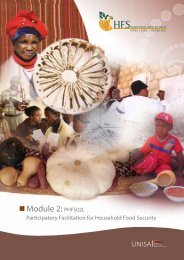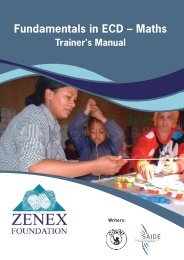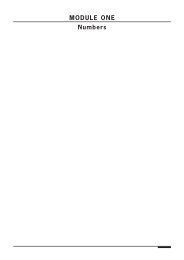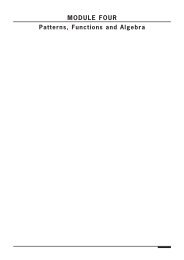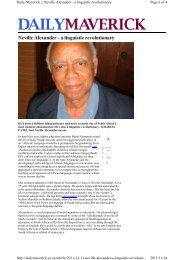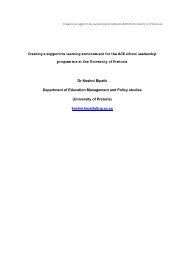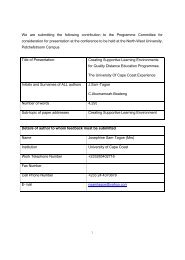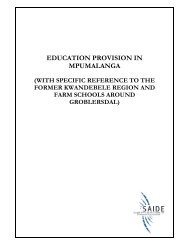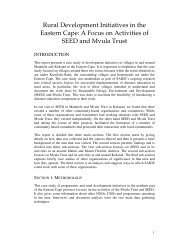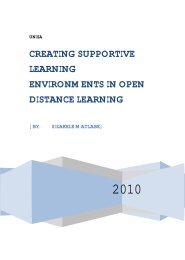Fundamentals in ECD - South African Institute for Distance Education
Fundamentals in ECD - South African Institute for Distance Education
Fundamentals in ECD - South African Institute for Distance Education
Create successful ePaper yourself
Turn your PDF publications into a flip-book with our unique Google optimized e-Paper software.
IntroductionSO2:Illustrate changes <strong>in</strong> size & shape of appearance of objects as result of changes <strong>in</strong>orientation.1. The perception of the changes <strong>in</strong> an object is described from differentobservational po<strong>in</strong>ts. (3-dimensional objects and 2-dimensionalrepresentations of 3-dimensional objects.)2. 3-dimensional objects are represented <strong>in</strong> 2 dimensions <strong>in</strong> such a way that thesize and shape of the object are correctly represented.3. The relationships between surface area and volume are described.4. Unit Standard 7453Use algebraic notation, conventions and term<strong>in</strong>ology to solve problemsSpecific Outcomes and Assessment Criteria:SO1:Form and use algebraic equations and <strong>in</strong>equalities to represent and solveproblems. (Simple l<strong>in</strong>ear equations and <strong>in</strong>equalities.)1. The problem is represented completely through equations or <strong>in</strong>equalities,which are consistent with the problem.2. The concepts of equations and <strong>in</strong>equalities are expla<strong>in</strong>ed.3. Situations requir<strong>in</strong>g the use of equations as opposed to <strong>in</strong>equalities, and viceversa, are identified.4. Algebraic rotation, conventions and term<strong>in</strong>ology are used correctly.5. The solution is correct <strong>in</strong> terms of the problem context.6. The solution is verified through substitution or other verification processes.SO2:Manipulate algebraic expressions to f<strong>in</strong>d equivalent <strong>for</strong>ms. (Common factors,products and group<strong>in</strong>g us<strong>in</strong>g associative, distributive and commutativeproperties.)1. The manipulated <strong>for</strong>m is equivalent to the orig<strong>in</strong>al <strong>for</strong>m. (The orig<strong>in</strong>alexpression is manipulated to achieve at least two different <strong>for</strong>ms.)SO3:Select and use algebraic <strong>for</strong>mulae to solve problems. (Substitution <strong>in</strong>to any<strong>for</strong>mula, solve <strong>for</strong> one variable, supplied <strong>for</strong>mulae from any context.)1. The correct <strong>for</strong>mula is selected <strong>in</strong> terms of the problem context.2. The <strong>for</strong>mula is applied correctly to obta<strong>in</strong> a valid solution.3. Units are used correctly.xvii



